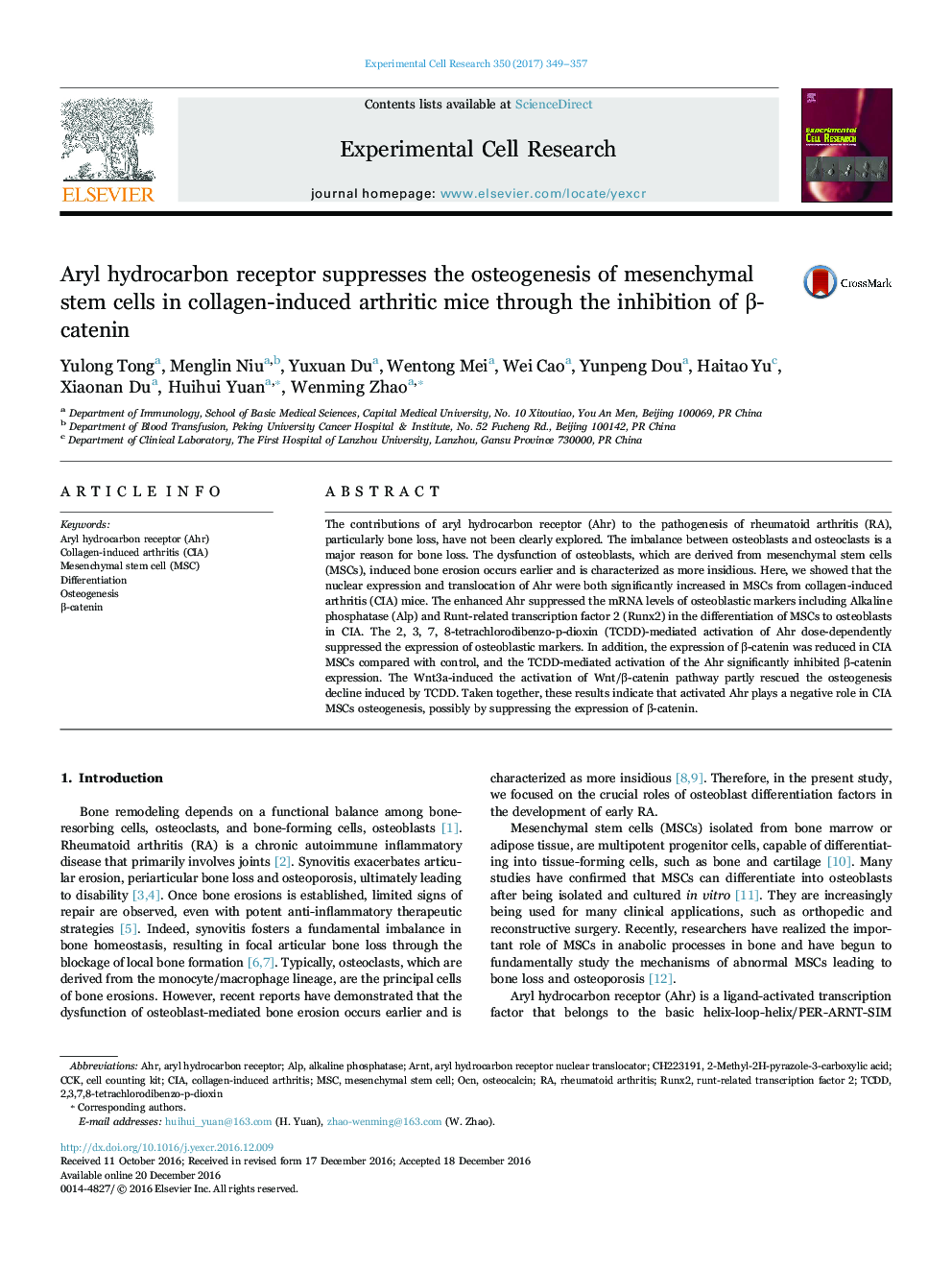| Article ID | Journal | Published Year | Pages | File Type |
|---|---|---|---|---|
| 5527031 | Experimental Cell Research | 2017 | 9 Pages |
â¢The Ahr pathway displays an activated profile in CIA MSCs.â¢The activation of Ahr suppresses osteogenesis in CIA MSCs.â¢TCDD suppresses osteogenesis in a dose-dependent manner.â¢The activation of Ahr inhibits β-catenin expression to exacerbate bone erosion.
The contributions of aryl hydrocarbon receptor (Ahr) to the pathogenesis of rheumatoid arthritis (RA), particularly bone loss, have not been clearly explored. The imbalance between osteoblasts and osteoclasts is a major reason for bone loss. The dysfunction of osteoblasts, which are derived from mesenchymal stem cells (MSCs), induced bone erosion occurs earlier and is characterized as more insidious. Here, we showed that the nuclear expression and translocation of Ahr were both significantly increased in MSCs from collagen-induced arthritis (CIA) mice. The enhanced Ahr suppressed the mRNA levels of osteoblastic markers including Alkaline phosphatase (Alp) and Runt-related transcription factor 2 (Runx2) in the differentiation of MSCs to osteoblasts in CIA. The 2, 3, 7, 8-tetrachlorodibenzo-p-dioxin (TCDD)-mediated activation of Ahr dose-dependently suppressed the expression of osteoblastic markers. In addition, the expression of β-catenin was reduced in CIA MSCs compared with control, and the TCDD-mediated activation of the Ahr significantly inhibited β-catenin expression. The Wnt3a-induced the activation of Wnt/β-catenin pathway partly rescued the osteogenesis decline induced by TCDD. Taken together, these results indicate that activated Ahr plays a negative role in CIA MSCs osteogenesis, possibly by suppressing the expression of β-catenin.
